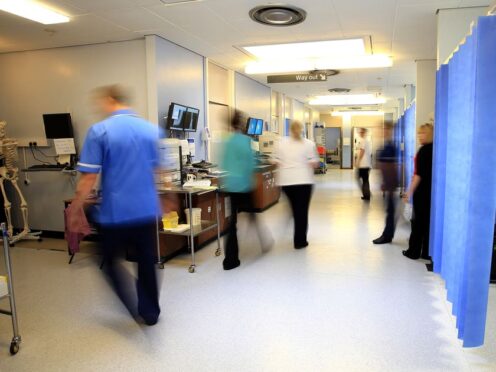
More must be done to address “stubborn staffing shortfalls” in the NHS, a leading think tank has said as it warned that patients in some parts of the country are more likely to get GP appointments compared to others.
The next government should set “bold policies and specific goals” to tackle workforce shortages in the health service, the Nuffield Trust said.
This could include a minimum number of GPs or writing off student debt, the think tank said.
It warned that shortfalls leave patients in some parts of the country “struggling” to access GP care.
People in Gloucester have 45% more GPs per head than those in Kent and Medway, according to analysis by the think tank.
It suggested that ministers could introduce a minimum number of GPs per patient in local areas to tackle “unfairness in access for patients”.
It added that incentives to attract GPs to underserved areas, including £20,000 golden hellos, “are not well understood” and little evidence exists on their attractiveness to doctors in training.
The Nuffield Trust also warned that a boost in nursing numbers is “not being felt equally”, with big declines in health visitors and disability nurses.
A new briefing document by the think tank suggests that ministers should consider gradually writing off student debt of healthcare workers in return for their service which could reduce high drop out rates in clinical training and early NHS careers.
It comes as the Royal College of Midwives (RCM) called on the Government to forgive student midwife debt and expand financial support for all healthcare students.
RCM’s director for representation and organising, Lynn Collins, said: “Almost every one of these midwifery students sees their career in the NHS, so forcing them into debt is beggars’ belief, particularly when you look at the demographic of those studying to become a midwife. To saddle any healthcare student with such a level of debt is wrong.”
In yesterday’s Budget speech, Chancellor Jeremy Hunt said that the NHS has “42,000 more doctors and 71,000 more nurses than it did under Labour – that is that is 250 more doctors and 400 more nurses every single month that we’ve been in office”.
But the Nuffield Trust said that “solely boosting the number of staff nationally in the NHS is not enough” as it called on ministers to reduce uneven distribution of key staffing groups across the country.
Nuffield Trust senior fellow Dr Billy Palmer said: “The public are all too aware of staff shortages, long waits and disruptive strikes creating real difficulties for health and care services and they deserve bold action from government to address these workforce challenges.
“Growing the NHS workforce is popular, and an ambitious workforce plan already exists, but to succeed it needs to be accompanied by robust policies or we risk wasting money, time and talented people too early in their NHS careers.
“Solely boosting the number of staff nationally in the NHS is not enough alone – the next government should set a clear aim of reducing the uneven distribution of key staffing groups and shortfalls to tackle unfairness in access for patients.
“This could be in the form of minimum numbers of GPs compared to patients in local areas, and better incentives to attract GPs to under-doctored areas should be considered.”
Commenting on the briefing document, Patricia Marquis, director for England at the Royal College of Nursing, said: “The crisis in the NHS workforce starts with the recruitment pipeline. Students are now taking on record levels of debt and paying it back is holding down the wages of those joining the profession.
“There is a growing consensus for the RCN’s call to write off student debt for nursing staff to boost recruitment into the NHS.”
A Department of Health and Social Care spokesperson said: “We are working hard to grow the NHS workforce. Last year the Government announced the first ever NHS Long Term Workforce Plan.
“Backed by £2.4 billion, this will double the number of medical school places, almost double the number of adult nurse training places, and increase the number of GP training places by 50% by 2031.
“We have already delivered an additional 50,000 nurses and an extra 50 million more GP appointments per year, with over 36,000 additional roles staff now working in general practice compared to 2019.”

Enjoy the convenience of having The Sunday Post delivered as a digital ePaper straight to your smartphone, tablet or computer.
Subscribe for only £5.49 a month and enjoy all the benefits of the printed paper as a digital replica.
Subscribe